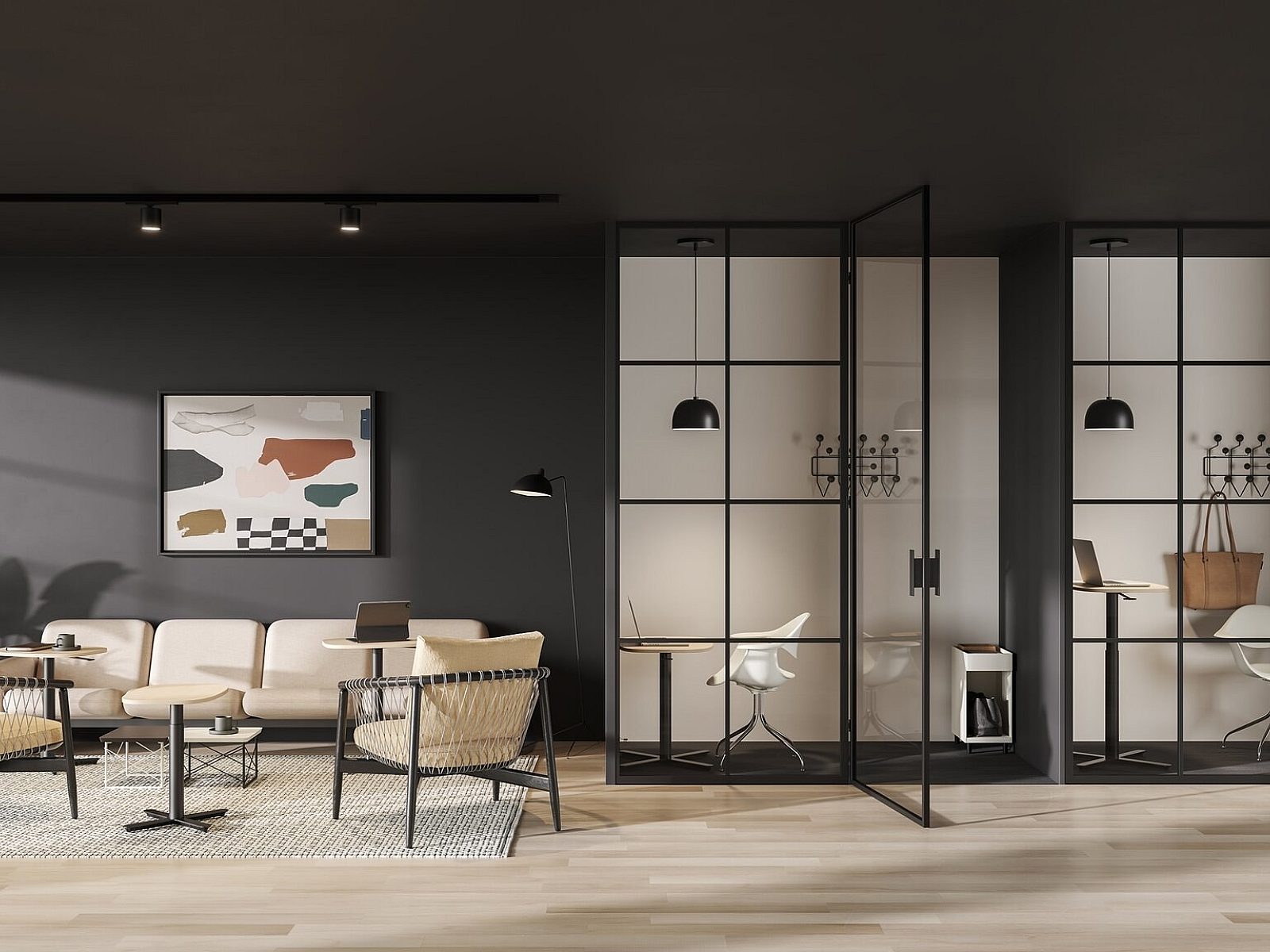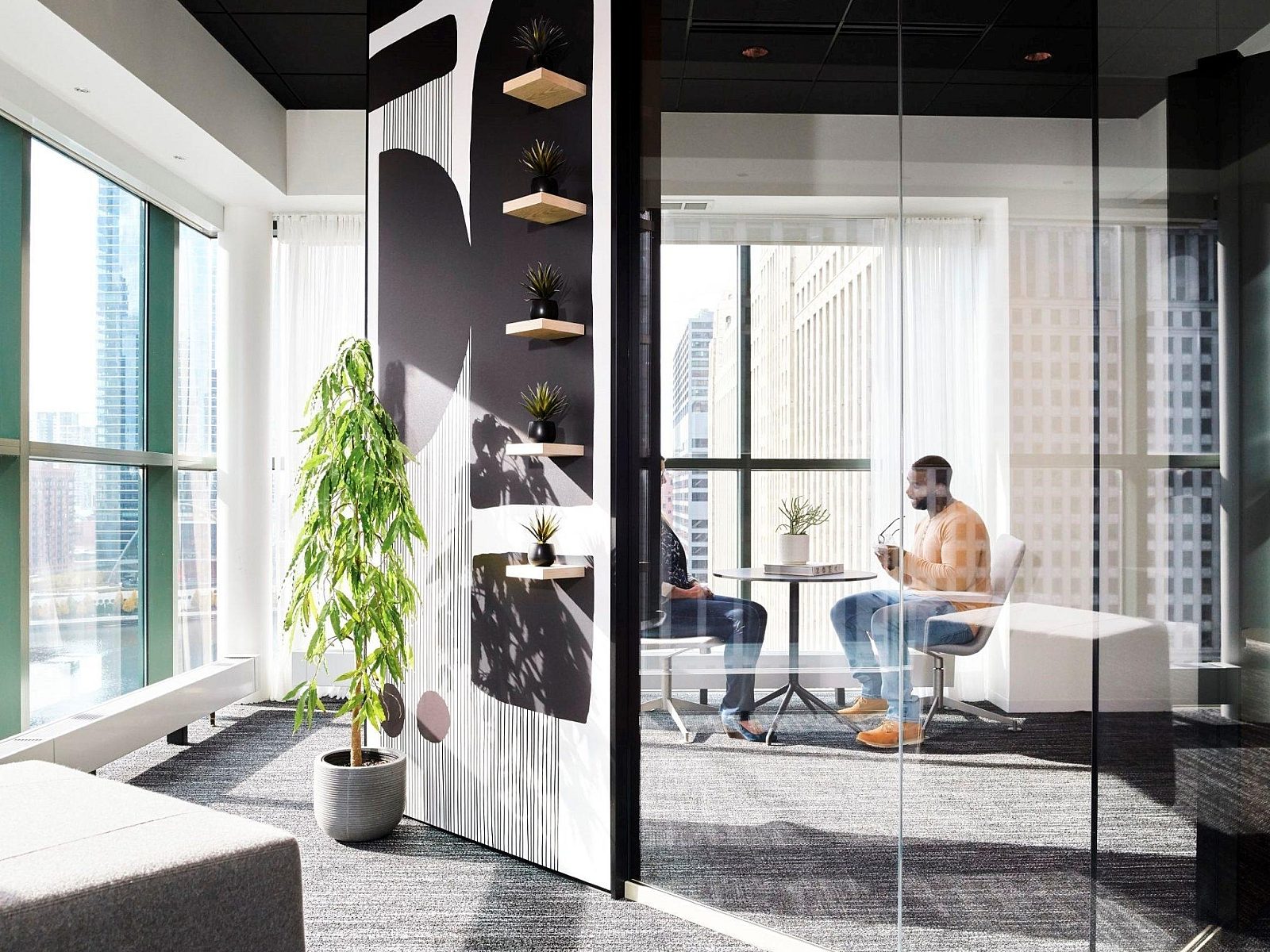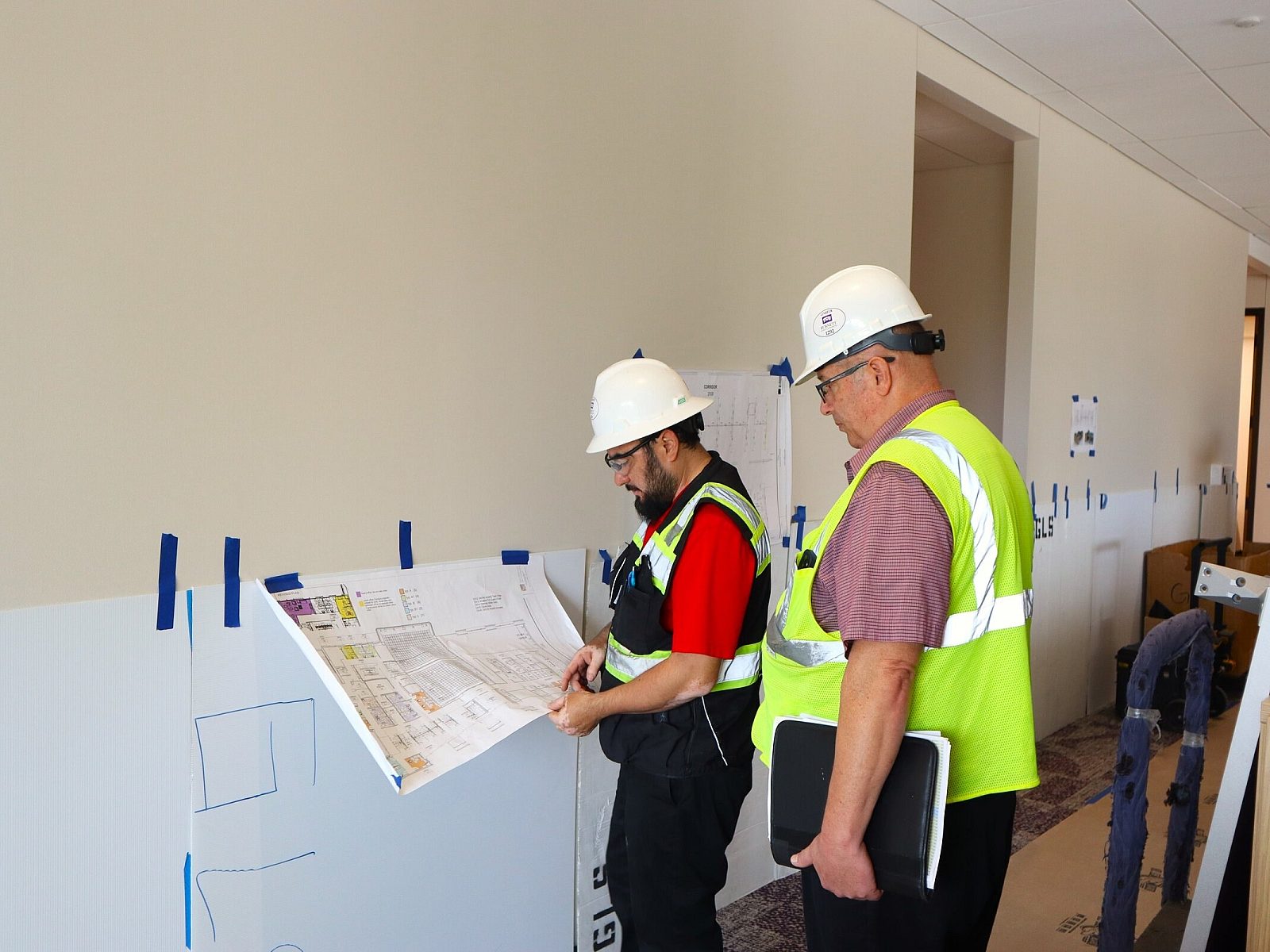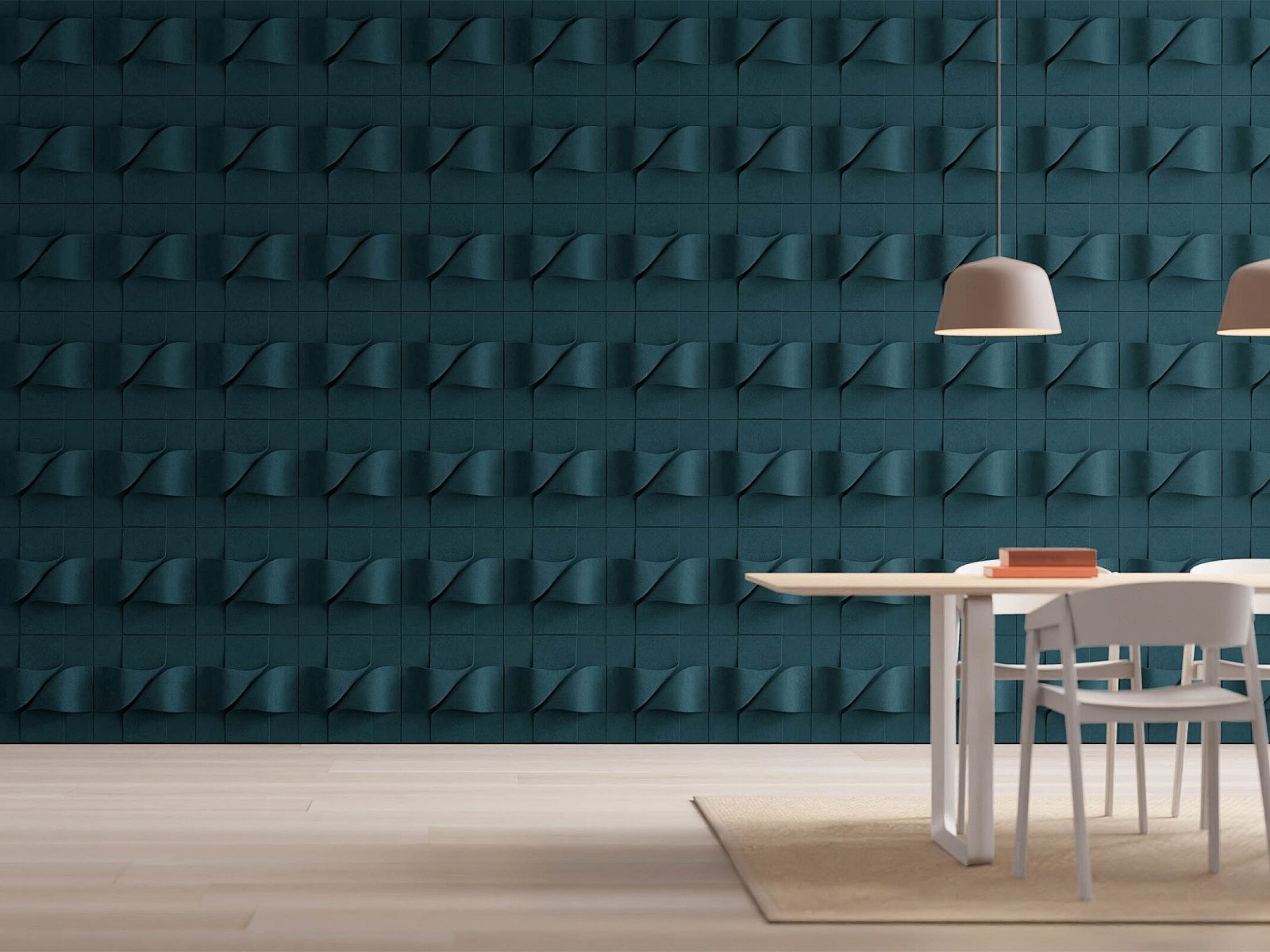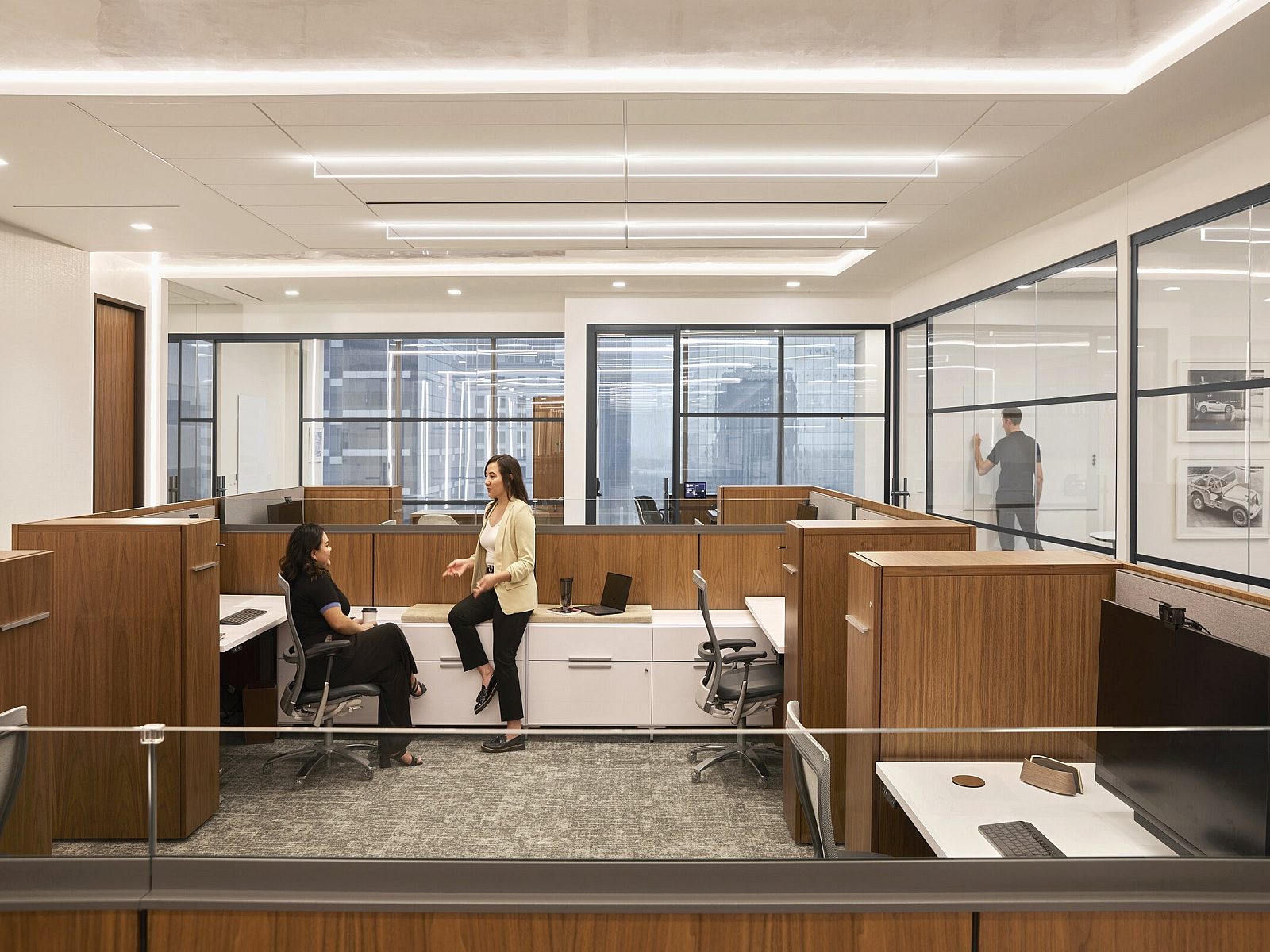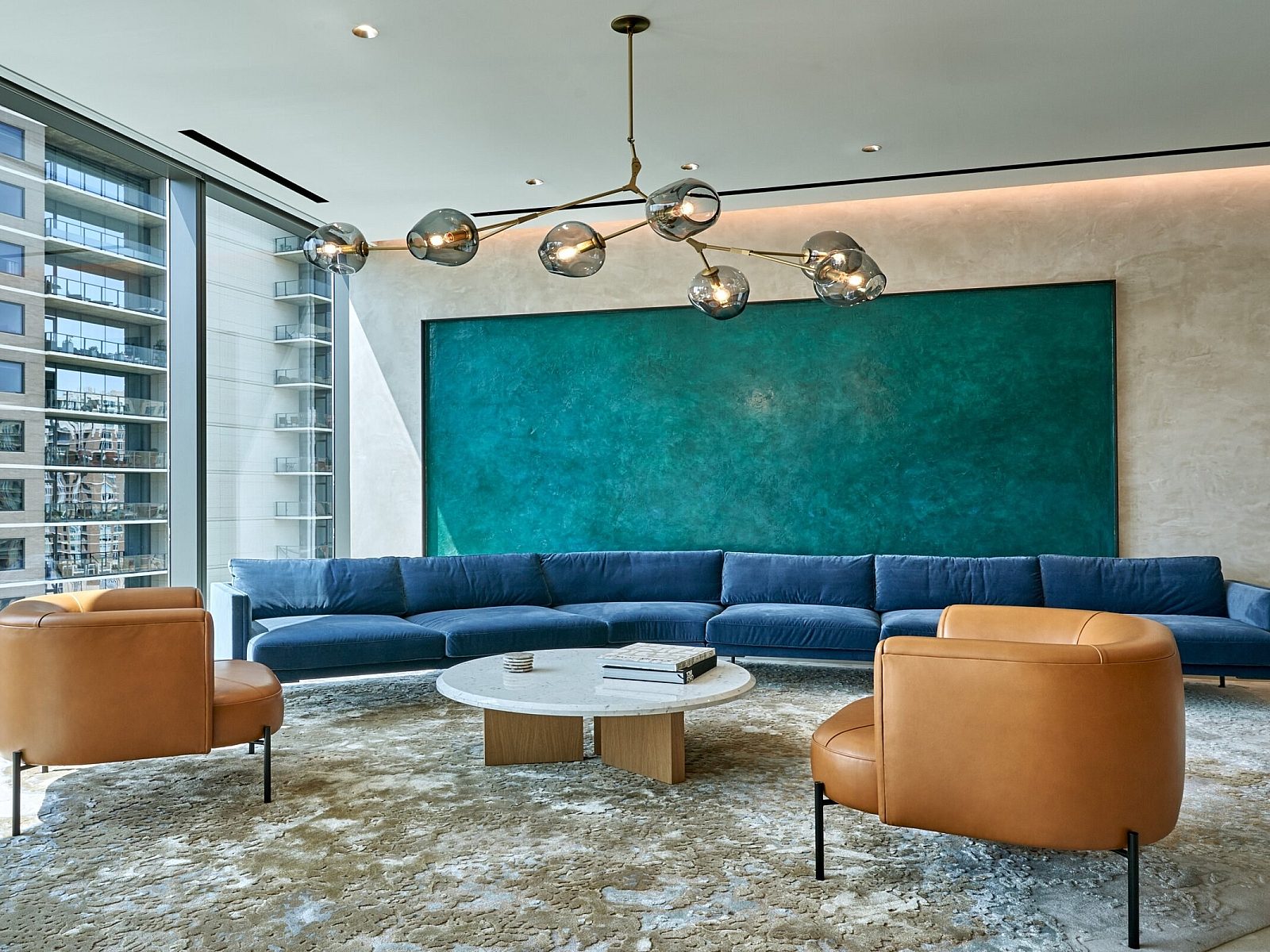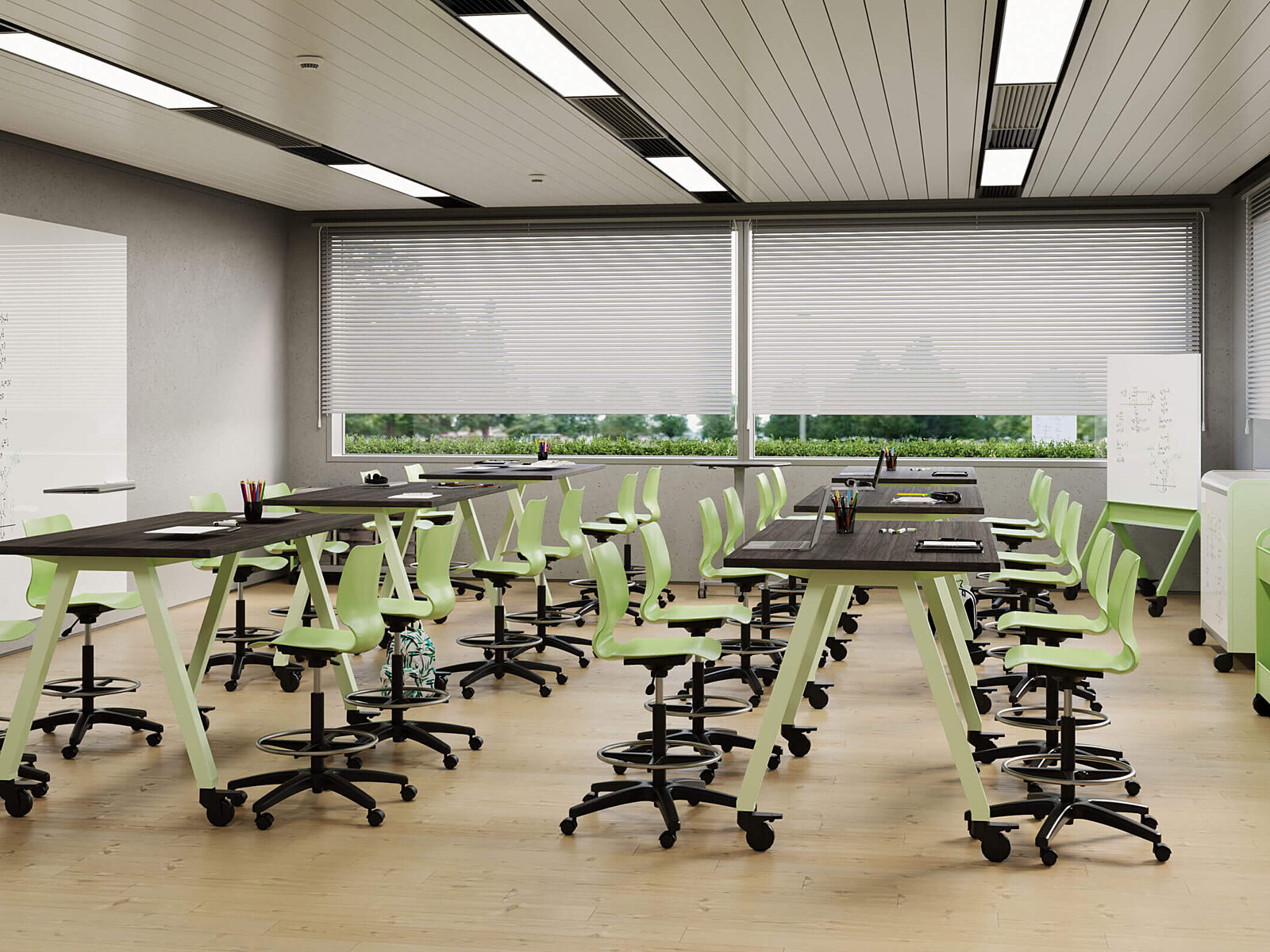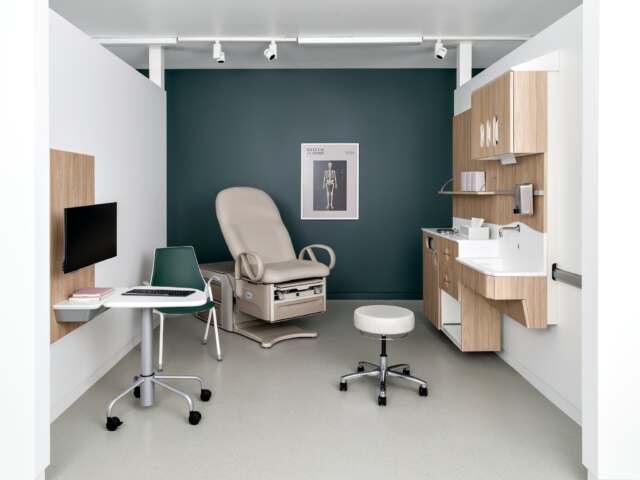Dynamic Workplace Concept: Changing Perceptions of Office Culture
Flexibility, focus, safety, security, socialization, collaboration, and improved quality of work life. Read more about the dynamic workplace concept now.
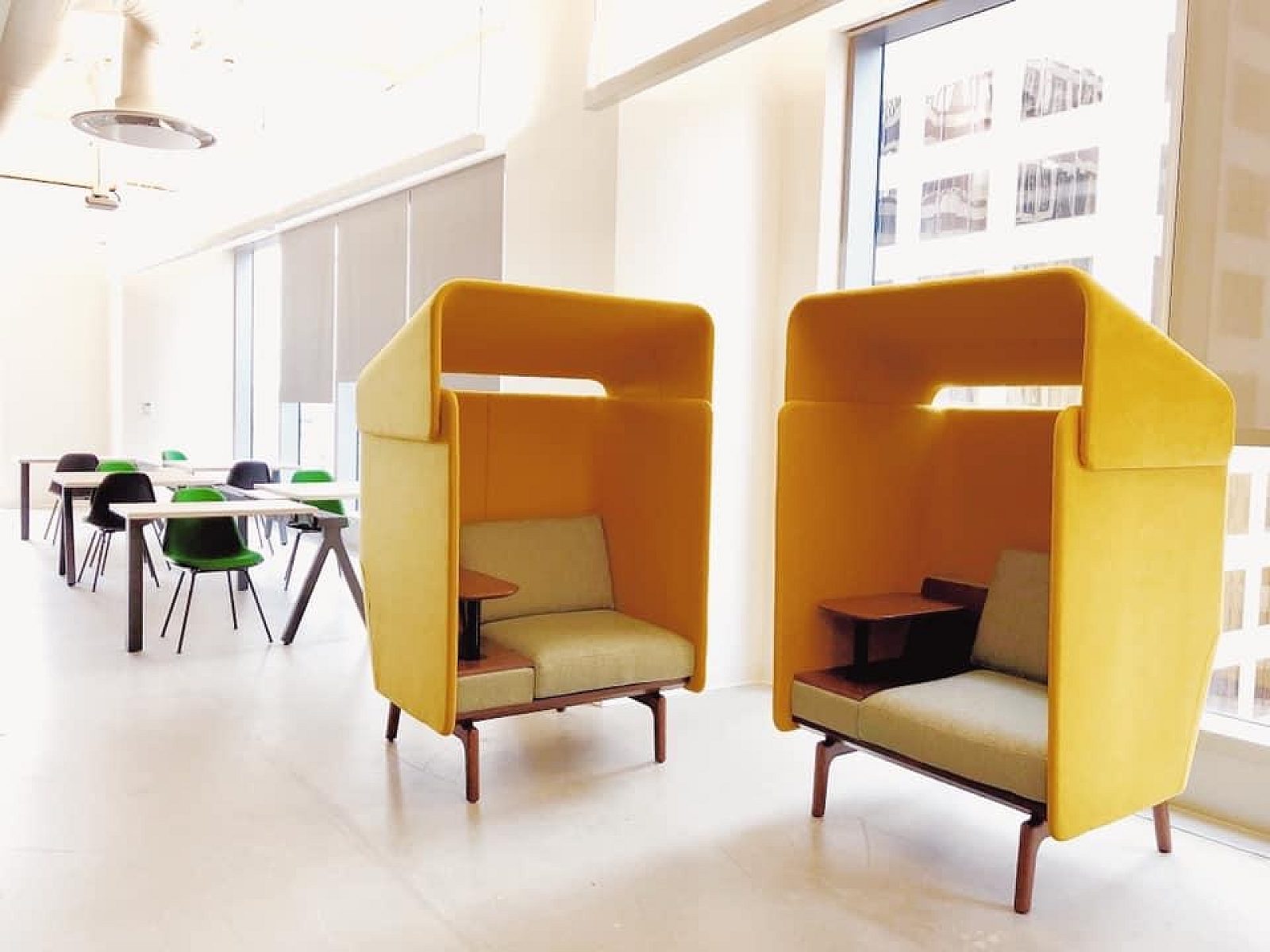
The Dynamic Workplace Concept Is Changing How We Think — And Talk About — Office Culture
2020 exposed significant cracks in the foundation of the modern workplace: the open office concept. As Christopher Mims writes in a recent editorial for The Wall Street Journal, “[c]ramming cavernous spaces with as many desks as they could hold might have increased serendipitous interactions, but it almost certainly reduced productivity and helped spread communicable diseases, including coronavirus.”
Entering 2021, business leaders have little choice but to address these structural issues. Otherwise, as Mims notes, their offices risk turning into “ghost towns.” 2020 proved that collaboration can happen by virtual means and introduced many to the perks of working from home. And, as it turns out, being free to work in one’s pajamas can be more incentivizing than access to an Xbox-stuffed gaming room.
Mims offers a fairly blunt assessment of the task now facing architects and designers. Floor plans and furnishings that promise to “improve the office-work status quo” are no longer enough. Instead, he says, businesses must create working environments that “convince people to even bother showing up.”
For that reason, the office of the future is looking more and more like the dynamic workplace.
What Is The Dynamic Workplace?
Not only is the dynamic workplace a relatively new concept. It is itself a dynamic — a mode of design thinking and an approach to problem-solving rather than a collection of templates and typicals.
What are the guiding principles of the dynamic workplace? Flexibility, focus, safety, security, socialization, collaboration, and improved quality of work life. These aims are as lofty as they are broad. Their accomplishment will look different industry by industry. Moreover, each dynamic workplace will depend greatly on the preferences of the talent each company wishes to recruit and retain.
By contrast, open offices have a distinct look and feel: sprawling, wall-less, hive-like. However, according to Calvin Newport of Georgetown University, the resulting spaces can tend toward the rhetorical. Noting the open office’s association with value propositions promoted by Silicon Valley (“disruption” chief among them), Newport contends that many companies speak this design language only “to signal that [they’re] doing something interesting.”
A dynamic workplace connotes rather than denotes. It is modular. And it only begins to make sense once you traverse it, experiencing each node and the connections that branch off from it.
Perhaps the best way to understand the dynamic workplace — and begin to assess whether it’s appropriate for your organization — is to treat it as a design language complete with its own specialized vocabulary. That’s why the business furniture, office design solutions, and interior construction experts here at GL Seaman & Company have assembled the following ABCs. Read on to learn more about the fundamentals of the dynamic workplace.
Cafe-Style Seating
Cafe-style seating has long been a popular choice for break rooms and foyers, but it’s assuming new prominence with the rise of the dynamic workplace. Imagine a meeting area where the traditional conference table has been replaced by several round pedestal tables surrounded by stool-height chairs.
The resulting spaces — or, if you prefer, enclaves — are both less formal and more easily reconfigurable. Even without moving any furniture, employees can cluster into and circulate between ad hoc groups. Brainstorming sessions, working task force meetings, even training sessions — cafe-style seating is particularly amenable to the kinds of employee engagement that create value for your business.
Hot Desking
Researchers at the University of Chicago’s Becker Friedman Institute for Economics claim that up to “37 percent of jobs in the United States can be performed entirely at home.” No wonder, then, that many companies are now rethinking their occupancy requirements.
In most workplaces, a 1:1, employee-to-desk ratio is a given. Hot desking breaks from this assumption by designating a set number of workstations that can be swapped at will and shared among several employees.
But hot desking is more than just a fancy name for unassigned seating. It’s a strategy that, under ideal circumstances, facilitates cross-functional exchange and increases operational efficiency.
That said, the risks of hot desking can outweigh its rewards. Before implementing a hot desking system, be sure that you can answer the following questions.
- Have you performed a professional space audit?
- What do your employees consider your workplace’s prime real estate?
- How do your employees define and value “personalization” within the context of when, where, and how they work?
- How many of your employees already come in early, stay late, or otherwise seek to minimize their interactions in order to stay productive?
- Will you create a dedicated hot desk “zone” or distribute hot desks throughout your offices?
- How will you clearly indicate how many and which desks are available on a first-come, first-served basis?
- How will you manage hot desk bookings? Inventory?
- How will you encourage good hot desking etiquette (e.g., hygiene)?
- How will you help employees locate each other as they roam autonomously from one hot desk to another?
Hoteling
Hoteling is similar to hot desking, only less granular and less impromptu. True to its name, hoteling allows employees to choose from a wider variety of workspaces — from pods (see below) to closed-door offices to conference rooms — and book longer stays. In fact, some “reservations” can last up to several days or stretch to weeks at a time.
Hoteling also helps solve another problem businesses face as they welcome employees back to the office: underutilization. Suppose that, on any given day, approximately half of your employees work from home. Under those circumstances, a significant portion of the investment you’ve made in aesthetically pleasing spaces, ergonomic furniture, and high-end computing resources is delivering little to no return. By making those resources more visible, a hoteling system can create more opportunities for your on-premise employees to put them to good use.
Hub-And-Spoke
Under the terms of the old normal, many American workers struggled with their daily commute. In some major metropolitan areas, they might lose two or three hours of every workday to the road. Stay-at-home orders changed all that. Now, work travel is measured in steps rather than miles.
Fortune 500 companies in New York, San Francisco, Chicago, Seattle, and other large metropolitan areas recognize that long commutes can cause employee morale to plummet and productivity to stall. Dror Poleg, co-chair of the Urban Land Institute’s Technology and Innovation Council, observes that these employers “are already experimenting with satellite offices in the suburbs of cities in which they already have a downtown headquarters. The main office will remain important… but fewer employees will be expected to be there all day, every day.”
These regional satellites are the spokes in the hub-and-spoke model. They may take the form of leased floors or entire buildings. They may also be bookable, branded areas within existing third-party co-working spaces.
The net effect the hub-and-spoke movement will have on property owners and landlords remains to be seen. But businesses can expect that, in the future, they will be managing more — and more short-term — leases. Meanwhile, smaller communities that may have been less successful in wooing relocating businesses may discover that they can now compete with big cities.
Consequently, Pelog argues, “[t]he office will become more of a consumer product. And just like every consumer product, the office will have to continually fight for its customers and meet their needs… [it]will need to be more focused on individuals, even if these people work for a large company.”
Hybrid Teams
Hybrid teams are teams in which some members work in close physical proximity, typically in a centralized location, while others are geographically distributed. This hybridity is increasingly popular among employees, but its benefits vary from industry to industry and company to company.
That’s because managing a hybrid team can be tricky. As the saying goes, success is often a matter of everyone pulling in the same direction. But if co-located team members seldom see the efforts made by their remote counterparts, an “us versus them” mentality can take root.
So how can leaders cultivate a sense of teamwork among colleagues who have limited options for synchronous interaction? Linda Hill of the Harvard Business School advises inclusivity. Even if all your employees cannot be together in the same place at the same time, they still share common goals, objectives, and expectations. “Consider [the shift to a hybrid team structure] an opportunity to affirm the aspects of your organization’s culture that you want to be the same, and talk about those that need to be adapted,” Hill says.
Inclusive Design
Think of inclusivity as the grand unified theory of diversity, accessibility, and equity. According to Bernice Boucher and Kim Vanderland of Work Design Magazine, inclusive design “refers to a broad spectrum of ways to produce buildings, products, and environments that are inherently accessible for people with or without disabilities resulting from aging or other conditions.” And its goal? “[T]o provide a workplace that is welcoming, enables everyone to reach the areas needed, and to fully use office equipment and resources.”
In other words, the inclusive office is even less hierarchical than the open office. As inclusivity consultant and author Dr. Pragya Agarwal writes in a 2018 Forbes editorial, “[d]esigning an inclusive environment does not mean focusing on physical differences alone; rather there has to be an equal emphasis on different styles of working as well as on mental health.”
Any given office design is subject to its creators’ assumptions and unconscious biases. Inclusive design adopts an enlightened, holistic — some might even say universal — perspective on how humans cooperate with one another and interface with their surroundings. There is no such thing as a minor detail in an inclusive office. Your HVAC system, the color and texture of your walls, the door hardware you choose to install: each contributes to making your workplace more accommodating.
Neighborhoods
Some innovative companies like Uber have taken a cue from urban planners and arranged their offices into self-sufficient neighborhoods. Employees working in the same neighborhood share a common goal and work in close contact throughout the day. Like proper neighborhoods, these office communities can expand or contract their boundaries in response to changing needs.
Moreover, each neighborhood has its own character. For example, a neighborhood populated by software coders will feature different structural elements and amenities than one populated by a salesforce.
Occupancy Sensors
Businesses interested in embracing technology and combatting climate change in addition to making their workplaces more dynamic are increasingly investing in occupancy sensors. These smart-building add-ons detect the presence of your people via either infrared or ultrasonic technology. But occupancy sensors do more than perform head counts. They transmit real-time data about how your spaces are being used.
For example, when installed in employee restrooms, occupancy sensors can automatically switch the lights on and off, saving your business electricity and lowering its utility bill. You can then analyze the data collected by the occupancy sensors to identify the times of day during which these facilities are most vacant. These insights can help you optimize your cleaning schedules — optimizations that can, in turn, lead to higher levels of employee satisfaction.
Pods
Not every area of your office has to encourage collaborative work. Sometimes, individual employees need to immerse themselves in their own work. Enter pods. These cozy, connectivity-enhanced spaces allow employees to sit down, plug in, and tune out distractions.
Workday Creep
The COVID-19 pandemic ushered in the work-from-home era. In doing so, however, it has also reinforced the importance of maintaining a healthy work-life balance.
The more employees office out of their living rooms and spare bedrooms, the more susceptible they may become to workday creep. As early as April 2020, Bloomberg reports, “homebound employees [were] logging three hours more per day on the job than before city and state-wide lockdowns.”
With its extreme flexibility, the dynamic workplace can be an antidote to workplace creep. Denied the ability to compartmentalize, some workers can quickly experience burnout. Simply put, it can be easier to call it a day when that day is spent working away from home — provided one feels safe, secure, and productive in that environment.
Adapt And Thrive With GL Seaman & Company
The modern, dynamic workplace is physical and virtual, centralized and distributed, dense and free from obstructions, highly specialized and deeply integrated, spontaneous and planned, organic and engineered, personalized and communal. Moreover, it leverages the benefits of inclusivity to short-circuit the contradictions latent in being all of these things at once.
The office design and interior construction experts here at GL Seaman & Company have the knowledge and creative skills to help you transform your office into a dynamic workplace.



